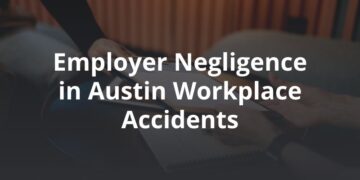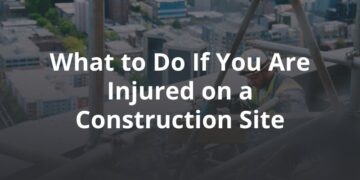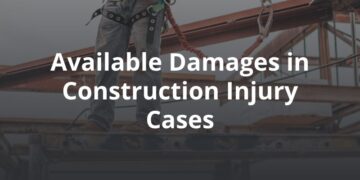With 11,755 traffic accidents in 2020, Austin is no stranger to reckless drivers. In this article, FVF Law has compiled
Bumper-to-bumper traffic, endless congestion, and seemingly endless construction: these make Austin’s roads notoriously tough to drive. But driving in Austin isn’t just difficult. It can also be dangerous.
With 11,755 traffic accidents in 2020, Austin is no stranger to dangerous driving. In this article, FVF Law has compiled and analyzed numerous data sources to discuss some key issues: Is it dangerous to drive in Austin, and if so, which roadways are the greatest concern? Just as importantly, what are some best practices for users to adopt to stay as safe as possible while driving in the city? As fatalities rise, know which areas present the greatest risk and how to keep yourself safe on Austin’s roadways.
Are Austin’s Roads Dangerous?
Generally, Austin’s roads are not as dangerous as some other cities’ — Dallas and Houston, for example, both feature heavily on the list of deadliest roads in Texas. Austin did make that list, however, with its stretch of I-35 being billed as the fourth deadliest roadway in the state.
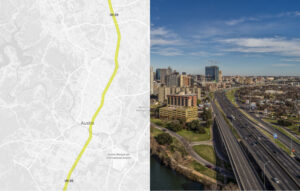
According to an article featured by KUT 90.5, Austin’s NPR station, more people died on Austin roads in 2020 than in any of the previous five years: a total of 94 fatalities occurred on the city’s roadways, which represents a 7% increase in fatal accidents. That statistic is particularly grim when considering that fewer drivers were on the road in 2020, as a result of the global pandemic. An article in the Austin American-Statesman confirms the bad news, noting that Austin traffic deaths have hit a four-year high.
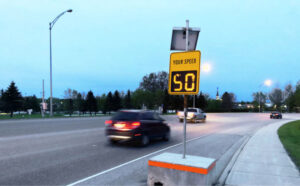
The reason behind the increase? Many experts believe it’s speed. The effect of speed is exponential — a pedestrian who is hit by a driver at 24.1 miles per hour has a 10% chance of being killed, but doubling that speed makes the potential for a fatality five times greater.
In response to speed being the primary contributing factor to many dangerous and severe accidents, the Austin City Council took action. “Based on a year-long comprehensive engineering study of speed limits on City roadways, the City Traffic Engineer determined that roadway speeds should be reduced to achieve safe and prudent speeds on a wide range of roadways in Austin,” notes a press release dated May 11, 2020.
The city’s speed limit strategy is outlined in three parts: neighborhood streets, urban core arterials, and downtown streets. Changes were phased in over several months, and some were accompanied by other roadway treatments, such as assigning portions of the road for alternative uses.
But speed isn’t the only factor that makes Austin’s streets less safe. The Austin Police Department, as part of the City of Austin Vision Zero Task Force, created a page with information about traffic fatalities, in order to help prevent traffic fatalities, serious injuries, and overall traffic crashes. In its traffic analysis, the Department noted that a majority of fatal crashes involved some form of impairment: 57% in 2016, for example, and 65% in 2015. The time of day also makes a difference, as the hours between 6 PM and 6 AM have the most fatal crashes. Criminal conduct is another great factor. In 2016, 29% of fatal crashes involved criminal charges, and 22% of those at fault had no valid license at the time of the crash. That number was even higher in 2015, at 34%.
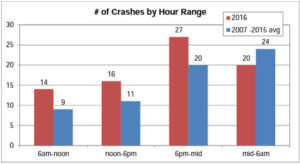 Statistics show that some days are more likely to result in fatal and non-fatal crashes than others, specifically, more fatal crashes tend to happen on the weekends, according to data provided by the Texas Department of Transportation. October was the most fatal month on the road in 2020.
Statistics show that some days are more likely to result in fatal and non-fatal crashes than others, specifically, more fatal crashes tend to happen on the weekends, according to data provided by the Texas Department of Transportation. October was the most fatal month on the road in 2020.
There was some good news in the 2020 statistics: although traffic deaths rose, serious injuries decreased by 22% compared with the 2019 numbers. Very likely, that number correlates to having fewer drivers on the road in 2020.
Many factors impact vehicular accident fatality statistics, making it impossible to make a direct correlation to Vision Zero’s effectiveness. For instance, there is simply more traffic on the streets as Austin and the surrounding areas continue to grow. So, it’s only reasonable that there would be more accidents, despite efforts to increase vehicular and pedestrian safety. The fact that serious injuries are on the decline even as traffic fatalities rise seems to indicate that efforts are working, albeit perhaps not as well as some would like. Clearly, there is work yet to be done to reduce the number of fatalities happening on Austin’s roads.
How Does Austin Compare to the Rest of the State?
Of course, Austin isn’t the only Texan city with its fair share of driving accidents and fatalities. According to the Insurance Institute for Highway Safety, Texas was the second-deadliest state when it comes to the number of fatal accidents overall in 2019. The Texas Department of Transportation reported that there were no deathless days on Texas roadways in 2020.
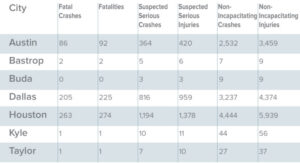
Non-fatal injuries are also rampant on Texas roadways. There were 12,107 serious injury crashes in Texas in 2020, with 14,656 people sustaining a serious injury in those accidents. A person was killed every 2 hours 15 minutes, one person was injured every 2 minutes 34 seconds, and a reportable crash occurred every 1 minute 7 seconds in 2020. Perhaps this is no surprise, when you consider that Texas has more lane miles of highway than any other state: 675,580 miles, to be exact.
In fact, according to Houstonia Magazine, the entire country’s deadliest road is in Houston ,Texas: I-45, which averages 56.5 fatal accidents for every 100 miles. Houston itself also represents the most lethal stretch of the highway, with about 73 deaths in 2019. And sadly, the state isn’t heading towards improvement — rather, Texas is “going the wrong way” regarding fatal crashes, reports the Houston Chronicle: “With traffic levels returning to normal levels post-COVID, Texas is on track for more than 4,000 deaths on state roads, a total unseen since the mid-1980s when the state had millions fewer residents and far deadlier streets, according to partial estimates from the first five months of 2021.”
Despite not being the city with the greatest share of accidents in Texas, Austin has its fair share of problems on the city’s roads. According to the Texas Department of Transportation’s 2020 statistics, Austin saw a concerning 11,755 accidents during that year. Of those, there were 86 fatal crashes, 92 fatalities, 364 suspected serious crashes, 420 suspected serious injuries, and 1,258 crashes with unknown injuries.
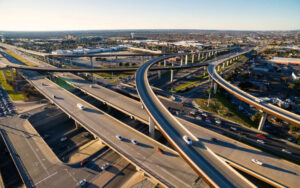
What are some of the most dangerous roads in the city and in surrounding counties? Let’s break down the data regarding the accidents that occur on Austin’s roadways.
What are Austin’s Most Dangerous Roads?
The Austin Police Department has identified 15 Austin roadways with the city’s greatest number of fatal crashes between 2007 and 2016:
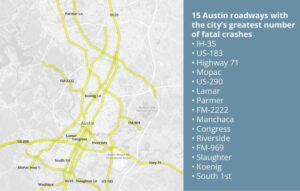
Additionally, an analysis by MoneyGeek names the most dangerous road in each county in Texas.
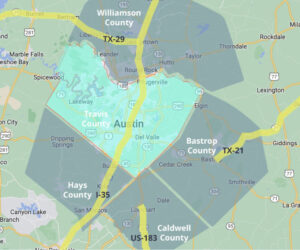
In the counties surrounding Austin, based on data analysis of federal and local traffic statistics, the following roads have been dubbed the most dangerous:
- Hays County: I-35
- Bastrop County: TX-21
- Caldwell County: US-183
- Williamson County: TX-29
What Can You Do to Avoid an Accident in Austin?
Although accidents are rampant on the city’s streets, there are certain precautions you can take to avoid them. FVF Law has reviewed and analyzed the data to provide helpful tips for each type of user on Austin’s roadways. The following are some best practices to use in order to avoid an accident.
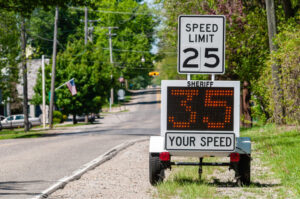
As a Driver:
Perhaps most importantly, avoid speeding and obey all traffic and safety rules. The National Highway Transportation Safety Administration has identified three factors that have driven the recent increase in deaths: impaired driving, speeding, and failure to wear a seat belt. Being alert is important — the NHTSA reports drowsy driving to be a serious issue, with data showing that sleepy drivers are less likely than alert drivers to take corrective action before an accident.
Don’t drive distracted. The NHTSA defines distracted driving as “any activity that diverts attention from driving, including talking or texting on your phone, eating and drinking, talking to people in your vehicle, fiddling with the stereo, entertainment or navigation system” and notes that this issue has claimed 3,142 lives in 2019.
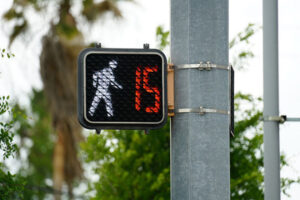
As a Pedestrian:
As a pedestrian, your chances of being severely hurt in an accident are grim. In fact, according to the Insurance Institute for Highway Safety, pedestrians accounted for about 18% of all fatalities in Texas traffic accidents in 2019. Pedestrian deaths present a great issue in Austin traffic: the Statesman article reported that pedestrians represented 2 out of 5 traffic deaths in the city in 2019.
To help curb your chances of serious injury, avoid any highways or service roads while you are on foot. According to the same article in the Austin American-Statesman, nearly half of pedestrian fatalities in the city in 2019 occurred on highways or service roads. In fact, the same article reports that the city’s Transportation Department is working with Vision Zero and the Texas Department of Transportation on solutions, including upgrading calls to police about people trying to walk across highways to a higher priority.
You should also be sure to cross the street only at designated crosswalks: another significant cause of pedestrian accidents was entering a road in an area without a crosswalk. To curb that issue, the city reports that it is increasing the number of pedestrian hybrid beacons, which are midblock crossings with traffic lights, and extending the amount of time pedestrians have at certain crosswalks.

As a bicyclist:
To avoid the most serious — often fatal — injuries, you should aim to stay off federal, state, and county highways. According to Share the Road Texas, 54% of bicycle fatalities in the state occur on interstates and other highways, and 70% occur at non-intersections. There were a staggering 16,807 crashes in Texas involving bicycles between 2010 and 2016. And although Austin and surrounding counties aren’t among the top ten counties for Texas bicycle accidents, there are an average of 315 bike accidents in Austin annually, according to bicycle statistics released by the Austin Police Department.
Riding during the night might not be a great idea, as 50% of bicycle crashes occur in the dark. Being on the younger side might also work against you, so definitely be extra cautious: Share the Road also reports that 59% of bike crashes involve people under the age of 25. The same article stresses that not wearing a helmet is shown to increase your chance of a fatality, so strapping one on can literally save your life.
The Austin Police Department notes a number of traffic laws specific to Austin bicyclists, including city ordinances and Texas state laws, familiarity with which can increase your safety. For example:
- Unless a bike lane is specifically designated otherwise, a bicyclist may not travel in the opposite direction of adjacent traffic. (Must be traveling in the same direction as traffic)
- A bicyclist may not ride between vehicles traveling or standing in the same direction within marked lanes. (Must wait in line like a vehicle would)
- A cyclist shall ride only on or astride a permanent and regular seat attached to the bicycle.
- A bicyclist may ride on a sidewalk, except for several Austin blocks, which are also detailed in this brochure.

As a motorcyclist:
Motorcycle accidents can result in severe, debilitating injuries, and they are far from uncommon in the city: according to the Texas Department of Transportation, as reported by CBS Austin, the Austin area is one of the worst in the state when it comes to fatal motorcycle crashes.
And according to the Insurance Institute for Highway Safety, motorcyclists accounted for about 12% of all fatal accidents in Texas in 2019. More than 80% of motorcycle accidents result in some injury, the National Highway Transportation Safety Administration says, with head injuries being the leading cause of death.
To increase your safety measures, slow down — this is perhaps even more important on a motorcycle than in another vehicle, when you consider that speed was a contributing factor in 34% of fatal motorcycle accidents, as compared with 21% of car accidents.
Also, wear a helmet: it can increase your chances of surviving an accident by 37% if you are driving and 41% if you are a passenger, the National Highway Transportation Safety Administration estimates; it is also 67% more effective in preventing a serious brain injury. In general, the NHTSA stresses the effectiveness of personal protection: “During a crash, the most important factor in reducing injury is personal protection for the motorcyclist. Leather jackets, gloves, trousers, proper footwear, eye protection, and helmets provide this personal protection.

How Can Austin Better Address Safety on Our Roads?
As gloomy as the traffic statistics are, there are several things the City of Austin — and, collectively, its residents — can do to reduce the number of accidents on the city’s roadways.
First, partnerships between the City, the Austin Police Department, and organizations that work to reduce traffic accidents, such as Vision Zero Austin, are crucial to tackling this issue. Vision Zero reports that its No Refusal Initiative, which was a partnership with APD, produced 1,900 DWI-related arrests in 2019 and over 1,400 in 2020. Moreover, in its effort to address speeding and distracted driving at high-priority crash locations, Over 11,000 warnings and citations were issued for these two behaviors through Vision Zero Austin in 2019 and 2020 on high crash priority streets.
Making the impact of crashes more visible and understandable to the public is another way Austin can help reduce accidents. Vision Zero Austin has a campaign to provide people who have been directly impacted by crashes an opportunity to inform others in the community of the true impacts of severe crashes. It also lists the names of those we have lost in fatal traffic accidents in the city–a visual reminder of our fragility on the road, and hopefully an effective behavior change strategy to complement the City’s engineering and enforcement efforts.
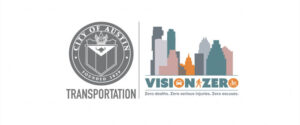
Austin must continue to implement safety improvements in order to make its roads more secure for drivers, pedestrians, bicyclists, and motorcyclists. Vision Zero Austin notes that over a dozen improvements have been instituted as a result of initiatives by the city and its partners. These include high visibility signage, new or refreshed street markings, plastic delineators to better manage risky car movements or highlight certain roadway features, changes to traffic signal timing, and more. Continuing with these improvements – and more – is imperative to making the city’s roads safer for all.
If you have suffered injuries in a traffic accident, whether or not you are at fault, we will work with you to explore your options and discuss the legal process for negotiating a settlement and filing suit. FVF Law wants victims of traffic accidents to be equipped with the knowledge they need to make decisions about what is best for them, regardless of pressure from insurance companies. Contact our car accident lawyers for a free consultation about your case.
Austin Roads To Avoid Animation crash data sourced from www.austintexas.gov/department/vision-zero , 01/2018 – 4/2022


